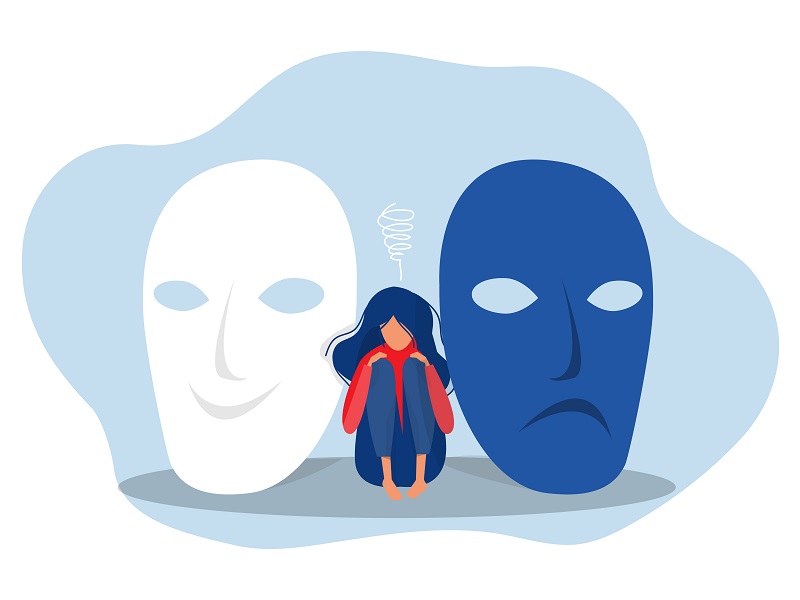Anxiety and Depression
Bob Rich’s Self-Therapy Guide: The Monster Depression Has Brothers
Bob Rich’s book From Depression to Contentment: A self-therapy guide is therapy in your pocket. Depression, anxiety, and other forms of suffering are all too common in our crazy world. Bob teaches you how to rise from that to “normal,” which is the walking wounded, then far above that, to inner strength enabling you to cope in any situation.
Recovering the Self published the first segment of Bob’s book in a series of posts starting from commentary on staying sane in a crazy world and ending with the quest for meaning via correspondence with young minds. The second segment of Bob’s work begins here with special attention to the meaning of depression, happiness, and resilience as well as the various influences in early and later life that make one vulnerable to depression.
Previously, Bob touched on the various sources of sadness. In this third segment of his discussion, he looks at the various forms of depression – what he calls the “brothers” of the monster depression.
The Monster Depression Has Brothers
There are three other patterns of ongoing sadness. I’ll use the diagnostic labels, but remember, the label is only a summary for a set of behaviors (“symptoms”), not an explanation.
Dysthymia
This “is a continuous long-term (chronic) form of depression. You may lose interest in normal daily activities, feel hopeless, lack productivity, have low self-esteem and an overall feeling of inadequacy. These feelings last for years and may significantly interfere with your relationships, school, work and daily activities” (Mayo Clinic).
Major depression
The difference from dysthymia is one of severity. Major depression is more major, believe it or not. It can go in episodes lasting weeks or months, with periods of “normality” in between, or can be ongoing. I’ve listed the symptoms in the introductory post.
Bipolar disorder
People suffering this pattern may go on OK for much of their life, but can crash into deep depression that can be suicidal. At other times, they experience a “high,” during which their thinking speeds up, they have trouble sleeping, can’t keep still, their every thought feels like the product of a genius, they are loud and sometimes aggressive. Some suffer delusions and hallucinations. They may engage in irrational acts like splurging all their money, or unwise sexual adventures.
However, many people with bipolar use the manic episodes for achieving great things. There is a long list of high achievers in all fields whose success is thanks to their bipolar. Lin Edwards has described this at https://medicalxpress.com/news/2010-02-high-bipolar.html
Unlike other patterns of sadness, bipolar has considerable genetic involvement. This is NOT a doom, but a tendency. I’ll discuss causation in the next chapter.
Typically, a perfectly OK person experiences some traumatic event, which triggers a manic episode. After this, the bipolar pattern keeps going.
For example, Gabriel met a girl while he was a tourist in Britain, and they married. He returned home to rent a house and get everything ready — then she sent a letter saying she wasn’t following. He got drunk, and woke in jail with no memory for the night before. He spent time for having assaulted police (broke one policeman’s jaw), and from the time of that letter, had the bipolar pattern.
Medication helps with bipolar. Suitable drugs even out the mood fluctuations. However, they all have nasty side effects, so it’s best to use them as little as possible, and to engage in psychotherapy.
I have a long-term friend who now controls his bipolar almost entirely using the tools I will describe later. He rarely needs to take medication, but will do so if he finds himself in difficulties.
On my website, you can read a letter from a young woman who was unable to take the medicines, and has developed a completely psychological way of coping, and more than coping but thriving: http://bobswriting.com/psych/bipolar-nodrugs.html
Her method will work for anyone willing to put in the effort, with bipolar, or with other psychological problems.
Homework
Think about each of the patterns I’ve described, and consider whether it applies to you. Use the internet to read up on any that do.
– Dr. Bob Rich






One thought on “Bob Rich’s Self-Therapy Guide: The Monster Depression Has Brothers”
Comments are closed.